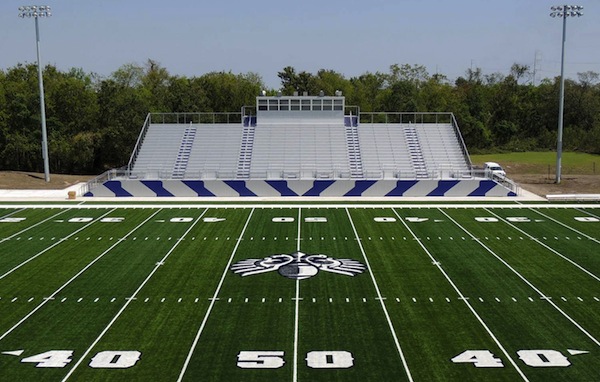Hurricane Katrina and the levee failures it caused left Joe W. Brown Memorial Park in east New Orleans under seven feet of water. The water sat for weeks, leaving everything below its depths to rust and rot.
- The march toward full recovery has advanced slowly but steadily, and now Joe Brown Park is not only back, it’s better than it was in the summer of 2005, before the fateful hurricane made landfall. Nike, the Allstate Sugar Bowl, and the Drew Brees Foundation joined the city to help fund the $23 million rehab, which includes a new football field and a new track and soccer field.
- Local AV integration firm Technical Services Group (TSG) designed and installed sound reinforcement systems for both areas, relying on Ashly Audio processing, amplification, and user control to provide a pair of complementary system that – although different “under the hood” – function identically from the user’s perspective.
- “I grew up in New Orleans, and I played high school baseball at Joe Brown Park,” said Patrick Meek, vice president of sales and marketing at TSG, who, together with AV designer Scott Richard won the bid and saw the project through to completion. “Being a part of this project was important to me personally. Moreover, it’s a high-profile job that’s being funded by some very big organizations. We worked hard to create a powerful, reliable system on budget, and Ashly’s performance per dollar, for processing, amplification, and user control, was a significant part of our success.”
- Because an endless parade of different, non-technically-inclined teachers, park officials, parents, and others would need to be able to reliably use the systems, they had to be completely intuitive. TSG therefore led with the Ashly RW-8C, a four-gang wall plate with eight programmable channel faders and a programmable master fader, each with an on/off button.
- “The two systems operate as equals from the user’s perspective,” said Meek. “They can walk into either one and understand that the various available microphones and input sources, all labeled on the RW-8C, can be turned on or off and turned up or turned down. Behind the scenes, the processing, amplification, and loudspeakers are different between the two systems, but that’s invisible to them.”
- The football field uses an Ashly ne24.24M processor configured with twelve inputs and eight outputs. A Denon CD player joins two Sennheiser HMD-Series headset microphones, a handheld Sennheiser e 935 microphone for vocals, and two Lectrosonics Venue-Series wireless microphones (a belt-pack transmitter lavalier system) and a handheld microphone transmitter at the inputs. Three QSC ISA-Series amplifiers power a Community array composed of two R2-77z, two R2-94z, and two R2-52z loudspeakers. In contrast, the track and field uses an Ashly Pema 8250.70 combination amplifier/processor together with a Protea processing-equipped Ashly ne2400.pe for both signal conditioning, mixing, and power.
- A Denon CD player allows for music playback, a Sennheiser HMD-Series headset, and a wired Sennheiser e935 microphone provides input for vocals, but this time those inputs are joined by Sennheiser ew-Series wireless lavalier and handheld microphones. Two Community R.5-66TZ and two Community R.5-94TZ loudspeakers complete the system.










